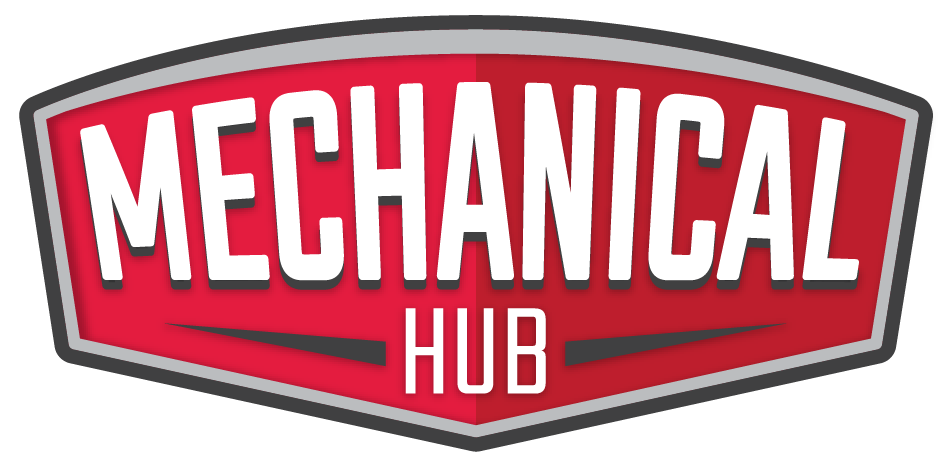Many building trade service businesses are age-old professions, and it’s quite easy to see why such businesses often fail to modernize them. For example, according to its history, plumbing originated from ancient civilizations and thanks to technology, new plumbing methods emerged. And this industry has a net value of $110 billion. There is every reason Read more
Whats New
Many building trade service businesses are age-old professions, and it’s quite easy to see why such businesses often fail to modernize them. For example, according to its history, plumbing originated from ancient civilizations and thanks to technology, new plumbing methods emerged. And this industry has a net value of $110 billion. There is every reason to modernize your business to gain its benefits, and here are some ways to do that.
 Set up a ‘Google My Business’ account
Set up a ‘Google My Business’ account
It is easy to set up a Google My Business account. All it takes is the commitment to start and finish the process. Even better, you can set up this account without making any payments to the host, Google. The required details are the business’s name, address, contact information and other relevant information. When that is set up, the real work begins. Your Google My Business account is not complete without reviews. However, that is not for you to provide. It would be a total lack of credibility to provide reviews for your plumbing business.
Therefore, your past and existing clients are better sources of honest reviews. The exciting part about Google My Business (GMB) is that it allows your business to be seen on search engines. Even though that wanders into SEO territory, it boosts your digital presence. It also becomes easier for potential clients to locate you quicker and easier. The 21st-century business dwells heavily on a strong digital presence to generate leads.
Make maximum use of digital invoicing and receipts
Gone are the days when plumbing businesses would rip a sheet out of a receipt booklet to acknowledge payments. The same applies to invoices and other manual billing systems. If this is your business in the 21st century, it may be time to make a drastic change. Digital invoicing and receipts help your business enhance financial record keeping. With less paperwork, it becomes easier to retrieve past financial information without looking through volumes of paper. This is particularly important when it’s time for account reconciliation.
Businesses that have adopted digital invoicing attest to the reduced cost of regular printing. It also reduces the cost of manual processing and delivery of invoices to clients or suppliers. Digitization is the vehicle for 21st-century business. Therefore, your payment systems should reflect your plumbing business’s desire to modernize operations.
Invest in video marketing
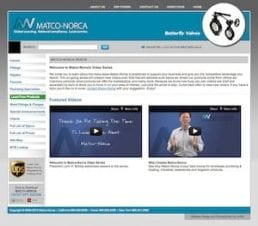 Three decades ago, the traditional media held a monopoly over video marketing, and businesses had to pay huge sums to get their video content played on media platforms. Today, that monopoly is no longer existent, thanks to social media. Once you set up social media accounts for your plumbing business, you can upload your video marketing content. The other exciting part is that it’s free to do so. Apart from the fact that video marketing is free, it also allows you to reach your target market directly. There is no middleman (traditional media) here. Today, video marketing has become a staple for modern businesses. Moreover, consumers are more interested in such content, which often produces positive results.
Three decades ago, the traditional media held a monopoly over video marketing, and businesses had to pay huge sums to get their video content played on media platforms. Today, that monopoly is no longer existent, thanks to social media. Once you set up social media accounts for your plumbing business, you can upload your video marketing content. The other exciting part is that it’s free to do so. Apart from the fact that video marketing is free, it also allows you to reach your target market directly. There is no middleman (traditional media) here. Today, video marketing has become a staple for modern businesses. Moreover, consumers are more interested in such content, which often produces positive results.

Production processes are the lifeblood of any business. If your production processes are not running smoothly, then you will find yourself struggling to keep up with demand and falling behind your competitors. The following blog will discuss some ways to ensure that your production processes run smoothly and without any issues. Ensure You Have A Read more
Production processes are the lifeblood of any business. If your production processes are not running smoothly, then you will find yourself struggling to keep up with demand and falling behind your competitors. The following blog will discuss some ways to ensure that your production processes run smoothly and without any issues.
Ensure You Have A Plan For Your Production Process
When you have a clear plan for your production process, you will be able to more easily identify areas where there is room for improvement. Having a well-designed production process will also help to ensure that your team is aware of their roles and responsibilities.
An excellent way to create a clear and concise plan for your production process is to use flow charts or diagrams. These tools can help you visualize your production process and identify any potential bottlenecks.
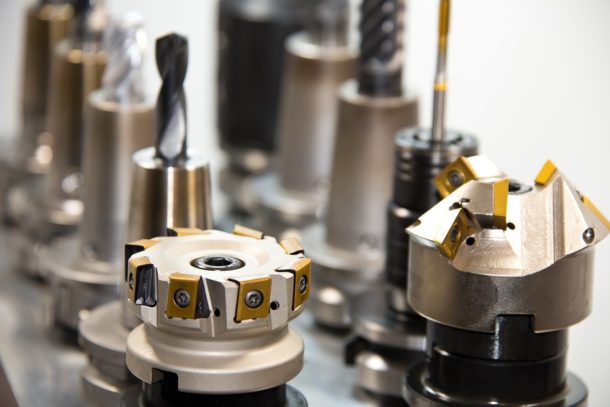
Make Use Of Technology
Technology can be a great asset for streamlining your production process. Several different software programs can help you manage your production process more effectively.
For example, using a project management software program can help you keep track of your production schedule and ensure that deadlines are met. Additionally, there are many other software programs available that can help with tasks such as inventory management and quality control.
Using technology will help make your production process more efficient and less prone to errors.
Schedule Regular Equipment Maintenance
If you want your production process to run smoothly, it is essential that you schedule regular maintenance for your equipment. Things like mechanical solutions will help to ensure that your equipment is always in good working condition and minimize the likelihood of unexpected downtime.
Be sure to create a maintenance schedule that is tailored to the specific needs of your equipment. Depending on the type of equipment you are using, the frequency of maintenance may vary.
Implement Quality Control Measures
It is also essential to implement quality control measures into your production process. This will help to ensure that the products or services you are producing meet the required standards. There are several different ways to implement quality control measures, so be sure to choose a method that makes sense for your business.
One way to ensure quality control is to perform regular inspections throughout the production process. This can be done by having someone on your team specifically responsible for checking for defects or errors. You could also consider investing in some type of automated inspection system.
Another way to improve the quality of your products or services is to provide training for your employees on proper procedures and techniques. By ensuring that your team is trained correctly, you can minimize human error.
In conclusion, there are several different ways to ensure that your production process runs smoothly. By having a clear plan, making use of technology, and scheduling regular maintenance, you can help to minimize the likelihood of issues. Additionally, implementing quality control measures will help to ensure that the products or services you produce meet the required standards.
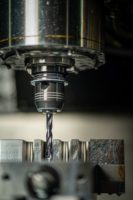
For an industry that is the path bearer for all other industries and forthrightly the engine for a nation, the power generation industry is vital. There are different types of power plants built for generating power from energy sources like coal, nuclear, solar, wind, tidal, or natural gas, a power generation plant can not compromise Read more
For an industry that is the path bearer for all other industries and forthrightly the engine for a nation, the power generation industry is vital. There are different types of power plants built for generating power from energy sources like coal, nuclear, solar, wind, tidal, or natural gas, a power generation plant can not compromise on the aspect of machinery and automation, since their performance is directly proportional to efficiency and productivity, which again are the focal points in this industry. In that pursuit, the CNC machine becomes a vital piece of machinery for the power generation industry.
Decoding CNC
A Computer Numerical Control Machine (CNC) is a pre-programmed computer software controlling the movement of factory tools and machinery. It controls a range of complex machinery and is proactively used in several industries, from manufacturing to E&P to power generation. It supersedes the limitations posed by manual intervention, where live operators prompt. It guides the commands of machining tools with levers, buttons, and wheels, curtailing inefficiency and the possibility of mishandling or flaws. A CNC system might very well resemble any regular set of computer components to an onlooker. Still, the software programs and consoles of CNC machining make it different from all other forms of computation and are proactively instrumental in the pursuit of power generation.
Role of CNC in power generation
CNC plays varied roles in various power generation industries. For example, it is instrumental in fabricating hydropower turbines and generator components. As we know, hydropower turbines and generators are complicated pieces of equipment and they have thousands of components in different sizes ranging from a piece smaller than our index finger to as big as a car. However, one common underlying fact is that all of these pieces of equipment are machines accurately with great precision to guarantee seamless assembly. CNC machine is then able to satisfy these requirements. For instance, Canyon Hydro, which is one of the leading manufacturers of Francis hydroelectric turbines uses a 7-axis CNC machine to fabricate the majority of the parts constituting their 36 Ft long and 25-ton hydroelectric system. Similarly in the conventional power industry, CNC machining is able to fabricate difficult-to-machine materials too. Unlike the renewable energy industry, traditional generator components are subjected to radically high temperatures of up to 2300℉ since these turbines and generators depend on burning fossil fuels to generate power. The problem that arises is not about finding a metal with high thermal resistance but finding a suitable method for manufacturing those metals since even metals like titanium and its alloys have high strength tend to chatter during metal cutting because of poor machinability. This problem is solved by CNC machining since it is compatible with a broad range of materials. For example, CNC machine titanium which has a cutting speed of 59 m/min for roughing and around 180 m/min for finishing operations is used for machining titanium and its alloys. It is also becoming a part of research in solar and wind power systems as scientists are devising ways to replace conventional energy systems with renewable ones by assessing the energy efficiency and performance of novel wind turbine blade designs and solar panels.
Machining dynamic and diverse forms of large and complex parts in a power generating facility often leads to several challenges, including repairs, maintenance issues, and finding the right human resource capable of running such a diverse assortment of machines. A CNC machine solves this problem and is easy to operate by operators for handling all motion controls. To a substantial extent, CNC also helps in the predictive treatment of pieces of equipment. In the most elemental form, CNC machines are electro-mechanical devices, i.e a computer numerically controlled to manipulate tools. These machines are instructed by a computer program (G-code) which is able to assess the precision of the output and therefore determine when it is not performing up to the mark.
CNC repair service in the parlance of power generation
It is well understood that the power industry is the engine of any economy since it runs all other industrial units, and CNC is undoubtedly a vital element of a power generation facility. Therefore, when the CNC system is down, the power plant is crippled, losing thousands of dollars and time. It is noteworthy that a CNC breakdown includes obstacles in all CNC machining processes like CNC milling, turning, five-axis machining, and several other jobs done by CNC automation. Thus, one must know the following dynamics of CNC repair service inducted in the power generation industry.
- A CNC machine consists of mechanical, electrical, and electronics components and generally encounters fault due to low-quality components, neglecting cutting parameters (for example, the cutting limit of a particular CNC machine is 500 rpm. and it is being operated more than that limit), and overloading.
- Common problems in the mechanical component of a CNC machine are, misalignment of bed, failure of the spindle, problem in gear shift mechanism, and problem in automatic tool changer which are results of overloading and overheating.
- Failure of moving parts such as screws, slideways, bearing, etc, can be repaired by reducing friction with proper lubrication and using a low friction coating.
- Failure in the relay, solenoids of the motor, failure in servo drive of the motor, problem in spindle drive electrical supply, short-circuiting, low voltage problems, etc. are some of the common problems of electrical components of CNC.
- Some of the most common problems in pneumatic components are the deformation of the inside wall of cylinders which is used in actuators, deformation in piston or piston rings which will lead to leakage and the equator will not be able to function.
- Electronic Components of a CNC machine comprise PCBs (Printed Circuit Boards), electronic casings and enclosures, heat sinks, connectors and sockets, semiconductors, etc. Therefore it can encounter failure in hardware components of computer systems, faults in the program (syntax error), operating faults, faults during program testing, and problem search operations.
- Routine CNC maintenance is essential, including scheduled inspection, predictive analysis, and a well-divested physical check-up of the equipment, control panel, and other parts. Complete maintenance service includes checking for any abnormal noise, replacement of hydraulic oil, checking spindle belt tension, cleaning the inlet filter, checking turret alignment, and dismantling and cleaning the chuck.
- It would be best to remember that there are various types of CNC machines such as drills, lathes, and milling machines. Therefore it is vital to always adhere to the maintenance guidelines specific to their CNC machine.
- The machine’s average run time and materials used are factors influencing how often it needs servicing. However, it is advised to have CNC machine checks at least once a month.
- A CNC Machine electrical maintenance must be carried out including spindle drive replacement, hydraulic pressure switch setting repairment, electrical circuit maintenance, etc.
- For CNC repairing, spare parts must always be handy as repairing the damage takes time. Hence, to eliminate the loss incurred during the downtime, one can purchase replacement parts in advance so that time which is of the essence in this industry, is not wasted waiting for the newly ordered ones to arrive in case of urgency.
- One thing that goes unaddressed by many sectors in the paradigm of CNC is keeping accurate records of the maintenance and repair services. It helps one in tracking the machine usage history over time and calculating how frequently various components need servicing.
Following a diligent practice of routine maintenance for CNC machines reduces downtime, improves tool life, maintains your significant financial investment, and improves productivity.

Sustainable energy options can help save money for your business, reduce your company’s carbon footprint, and create a more sustainable business environment for you and your employees. The best sustainable energy options for your business depend on the size of your company, the location of your business, and the expected costs of operating your business Read more
Sustainable energy options can help save money for your business, reduce your company’s carbon footprint, and create a more sustainable business environment for you and your employees. The best sustainable energy options for your business depend on the size of your company, the location of your business, and the expected costs of operating your business. That being said, there are some general guidelines that businesses of all sizes can follow to make the most of sustainable energy options for their company. Many companies operate on electricity, and companies need to have reliable electricity. This article outlines how to choose suitable sustainable energy options for your business and some of the benefits.
Why Choose Sustainable Energy Options?
Choosing sustainable energy options for your business can help you reduce your company’s carbon footprint and save money while doing so. A business’s carbon footprint is the total amount of carbon that a business puts into the atmosphere due to its operations. When choosing sustainable energy options for your business, you’ll want to reduce as much carbon as possible while maximizing the amount of energy your company uses.
Your business’s carbon footprint can be reduced by choosing sustainable energy options that produce less carbon than other energy sources. While any one energy source may produce slightly more carbon than another source, some sources produce significantly more carbon than others.
Solar Power
While the costs of installing rooftop solar panels are increasing, the price of electricity generated by solar panels has been decreasing. As the costs of solar continue to fall and governments worldwide start to tax carbon emissions, solar energy is likely to become more cost-effective and widely used as a sustainable energy option. As a sustainable energy option, solar panels are a great way to produce electricity for your business.

Hydro Power
Instead of using conventional electricity to run your business, you could choose to produce your power using hydropower systems. This is an excellent sustainable energy option for companies that want to minimize the carbon footprint of their operations. It’s also a good option for businesses located in areas where hydropower is in abundance and a reliable source of energy. You can install a hydropower system to produce your own electricity and supply it to your business.
Geothermal Energy
You can install ground-source heat pumps via geothermal drilling to produce your power and supply it to your business. This is another excellent sustainable energy option for your business because it will help you save money on your electric bill while producing your own power. It’s also a perfect option if your business is located in an area where it’s sunny all year round. There are a lot of benefits to installing ground-source heat pumps for your business, such as:
- It saves you money on your electric bill by powering your business with the electricity you produce on your property.
- It’s an excellent sustainable energy option for businesses located in areas where ground-source heat pumps are abundant and reliable.
- It creates a more sustainable business model because you don’t have to rely on fossil fuels for electrical energy.
Biomass Power
Biomass power is a sustainable energy option that produces electricity and produces biogas. Biomass power plants generate electricity by burning wood or other organic materials. These plants also produce biogas, which can be used as fertilizer or generate electricity.
Conclusion
As the costs of sustainable energy options continue to decrease, more businesses choose to operate on renewable energy. When choosing to switch to sustainable energy options, do your research and find the option that works best for your particular business needs.
With so many sustainable energy options available, it can be challenging to decide which one is best for your company. The good news is that there are a few general guidelines that businesses of all sizes can follow to make the most of sustainable energy options for their company.

Long were the days when someone would just have a problem with their home (such as plumbing), pull out the phonebook go into the yellow pages, and then find the first name or ad that caught attention. Marketing used to be so much simpler for contractors, maybe a phonebook ad here and there, sometimes an Read more
Long were the days when someone would just have a problem with their home (such as plumbing), pull out the phonebook go into the yellow pages, and then find the first name or ad that caught attention. Marketing used to be so much simpler for contractors, maybe a phonebook ad here and there, sometimes an ad in the local newspaper, maybe even a little radio jingle if you had the funds.
While there are plenty of contractors that have been around long enough to where they immediately have a clientele that relies on them, if you’re new in the contracting world, it may not be so easy for you. But here are some handy marketing practices that any beginner can use so they can really get their name out there.
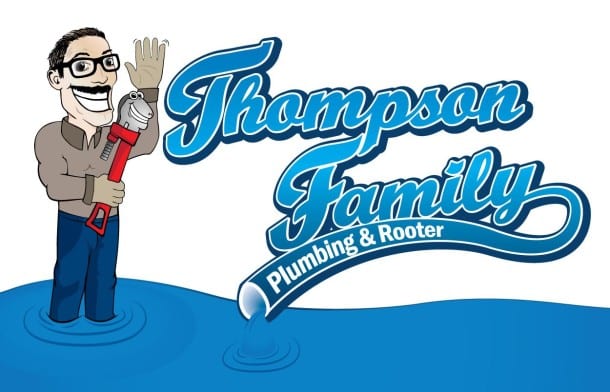
Create a Solid Company Identity
A company’s identity is one of the most important aspects of its branding. The logo, colors, and style are all key factors that make up a company’s identity. Companies (individuals too) should first think about what they want their brand to represent. They should then design a logo that will best represent the values they want to portray and give off the right message to customers. Your identity needs to reflect who you are, but this also needs to sell, and pop out to potential clients.
Choose the Right Marketing Channels
Marketing channels are the ways in which a company communicates with its customers and potential customers. The marketing channel that is chosen for a campaign is dependent on the type of product or service, the target audience, and the budget. A marketing channel can be anything from an email campaign to social media posts. The most important thing about choosing a marketing channel is identifying which channels will best suit your needs.
Some contractors opt for having a website, others use Google My Business and have helpful services like Sofiaseo.com to boost their SEO. If it’s something you’re completely new to, make sure you’re doing some thorough research, maybe even ask around about how people find contractors they need.
Develop an Affordable Marketing Strategy That Fits Your Budget
You’re going to need a marketing strategy that is tailored to fit your budget. This means that you will not have to spend a lot of money to get the marketing results you want. While there are plenty of best SEO practices for contractors, you’ll need to figure out what exactly can fit your budget.
Usually, websites can be fairly affordable, social media channels are free, and email marketing services from MailChimp are free for your first 2,000 subscribers. Also, YouTube is technically considered to be free too. There are many different ways for you to execute an affordable marketing strategy. Creativity never hurts.
Create Professional Social Media Accounts
You don’t need to hire some marketing agency to get your social media pages set up. Social media has become an integral part of our lives. It is the best way to stay connected with friends and family, keep up with the latest news, and find out what is happening in the world. It has also become a great marketing tool for businesses. You’re absolutely going to need to think about the content that you plan to put on the website.
You can just instantly expect likes, follows, and clientele just from simply having a page. Make sure it looks professional, have it look enticing, even go as far as checking out what some other contractors (local or not) and see how they’re making all of this work for them. Content is king, so be prepared to offer some sort of value. Value creates trust, and trust means that there will be enough comfort to hire you.
Create Your Own Website or Landing Page With Relevant Content
This has been recommended all throughout this article. You should absolutely put into consideration creating a website for yourself. But before you do, think of some of the potential considerations for building up a website.
- What type of website do you want?
- What is your budget?
- What is your industry?
- Is your website mobile friendly?
- Do you need a blog or email newsletter integration on the site?
- Will you be using social media on the site?
Having a website doesn’t necessarily need to be expensive. There are more than enough website builders on the market that are fairly inexpensive. WordPress is considered one of the classics, but others such as Weebly, Wix, and SquareSpace are also considered wonderful for contractors as well. But even if you’re on the cheaper side (as in free) then WordPress.com (it’s not self-hosted) and Blogger could be fairly decent options too.
